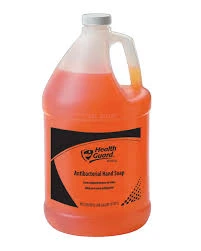difference between flocculant and coagulant
Understanding the Difference Between Flocculants and Coagulants
Water treatment processes often rely on two key chemical agents flocculants and coagulants. Although these terms are frequently used interchangeably, they represent distinct processes that serve different purposes in the treatment of water. Understanding the differences between these two agents is essential for engineers, environmental scientists, and anyone involved in wastewater treatment or drinking water purification.
Definition and Function
Coagulants are substances that promote coagulation, the first step in the water purification process. This process involves the neutralization of charges on suspended particles in water, enabling them to clump together and form larger aggregates, known as flocs. Common coagulants include aluminum sulfate (alum), ferric chloride, and polyaluminum chloride. These agents work effectively in destabilizing colloidal particles, which are usually negatively charged due to natural organic matter, clays, and other impurities.
Flocculants, on the other hand, are agents that aid in the agglomeration of these floc particles into larger masses after coagulation has occurred. They help further consolidate the particles into dense flocs that can easily settle out of the water or be removed through filtration. Flocculants generally have a high molecular weight and are often made from natural substances like starch or synthetic polymers such as polyacrylamide.
The Process of Water Treatment
The water treatment process typically starts with coagulation. When coagulants are added to water, they begin to neutralize the charges on suspended particles. As these particles lose their charge, they start to stick together and form small aggregates. This process can be influenced by several factors, including pH, temperature, and the presence of other chemicals or ions in the water.
After coagulation has taken place, flocculation follows. In this step, flocculants are introduced to the water, where they assist in the formation of larger, more stable flocs. The flocculation process involves gentle mixing, which encourages the already destabilized particles to collide and form larger clusters. This phase is critical because larger flocs can settle out of the water more readily due to their increased size and weight.
Comparison of Characteristics
difference between flocculant and coagulant

2. Charge Neutralization vs. Aggregate Formation Coagulants focus on neutralizing electrical charges on particles, which allows them to aggregate. Flocculants further facilitate the merging of these aggregates into larger masses.
3. Usage Timing Coagulants are added at the beginning of the treatment process, while flocculants are introduced after coagulation, ensuring the aggregated particles can merge effectively.
4. Concentration and Dosage Coagulants are usually required in smaller amounts compared to flocculants because they need to neutralize particle charges quickly. Flocculants may require more significant dosage as they are used to form larger aggregates over time.
Applications
Both coagulants and flocculants have widespread applications in various industries beyond water treatment, including paper manufacturing, mining, pharmaceuticals, and food processing. In wastewater treatment, both agents work in tandem to remove suspended solids, bacteria, and other impurities, thereby improving water clarity and quality.
Conclusion
Coagulants and flocculants are pivotal in the water treatment process, but understanding their differences is crucial for optimizing water purification systems. Coagulants initiate the process by neutralizing charges and allowing particles to aggregate, while flocculants enhance this aggregation, leading to the formation of larger flocs that can be easily removed. Knowing when and how to use these agents can significantly impact the efficiency and effectiveness of water treatment methods, ensuring safe and clean water for various applications.
-
Water Treatment with Flocculant Water TreatmentNewsJun.12,2025
-
Polymaleic AnhydrideNewsJun.12,2025
-
Polyaspartic AcidNewsJun.12,2025
-
Enhance Industrial Processes with IsothiazolinonesNewsJun.12,2025
-
Enhance Industrial Processes with PBTCA SolutionsNewsJun.12,2025
-
Dodecyldimethylbenzylammonium Chloride SolutionsNewsJun.12,2025





